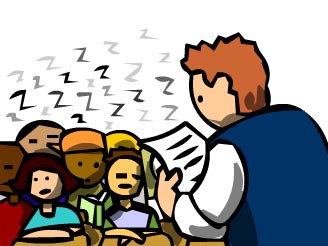 Have you ever listened to a presentation by someone who was very knowledgeable and wished he had given you more? Everytime you speak in public, that is how you want your audience to feel, yearning for more. As I specified in my eBook: The 3P’s of Public Speaking, preparation, practice and performance are the key elements that go into making a speech in public a masterpiece. Because we all get to give speeches in public at one point or another in our lives, we might as well get good at it.
Have you ever listened to a presentation by someone who was very knowledgeable and wished he had given you more? Everytime you speak in public, that is how you want your audience to feel, yearning for more. As I specified in my eBook: The 3P’s of Public Speaking, preparation, practice and performance are the key elements that go into making a speech in public a masterpiece. Because we all get to give speeches in public at one point or another in our lives, we might as well get good at it.
Below are three simple tips to make your speech or presentation better:
- Consider the worse case scenarios and make peace with them. The best way to overcome an obstacle is to face and acknowledge it, then get over or around it. The problem with public speaking for most people is that they don’t know what it is they are exactly afraid of. They think they are afraid of public speaking but in reality they are afraid of being rejected by the audience. Find out exactly what makes you nervous about public speaking. What don’t you want to happen? List all the bad things that could happen before, during or after your public speech, then make peace with them by accepting them as highly unlikely events that could take place. Make peace with what you fear most.
- Talk to yourself before you take the stage. We all have an inner voice that only we can hear. Unfortunately most of what comes out of that voice is negative. The best way to disrupt that inner voice feeding your nervousness is to talk out loud to yourself. I usually do that in the bathroom a few minutes before I get on stage. If you cannot give yourself a pep talk speaking out loud, write a personal positive self talk on paper and read it over and over again until the moment comes for you to take the stage.
- Look at the happy face in the audience. Eye contact is intimidating for inexperienced speakers. Because I know how much intimidating public speaking can be, every time I am in an audience I turn myself into the happy face for the speaker. I wear a smile and encouraging face throughout the time I am engaged in listening. It really can make a huge difference for a speaker who is not much experienced at public speaking. Being a public speaker, I have observed that there is always a happy face in the audience that you can look at to help you feel more at ease.
The items on the list can appear very basic, but if you try them I guarantee you will benefit from it. If you have already used or use those tips, let me know how they work for you. If you have other simple practical tips for improving public speaking, why don’t you share them in the comments section below?
